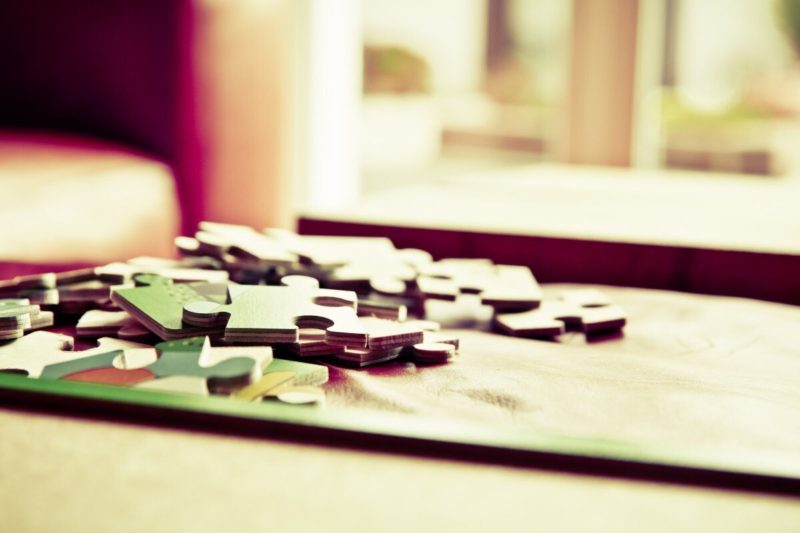With a large percentage of the modern world on lockdown or observing some level of the stay-at-home directive during the worldwide COVID-19 outbreak, at-home activities have exploded in popularity. At the same time, individuals and families are looking for creative outlets to fill the time. Several major product types and their industries have stepped up to fill this void, and none more so than the puzzle industry.
The demand for the jigsaw and other puzzle types has skyrocketed during recent weeks and months, no surprise given the factors laid out above. Some of the largest puzzle companies in the world have struggled to keep up with such a demand.
Luckily, a few industry leaders, such as Dowdle Folk Art, have found ways to safely resume puzzle production to allow for new puzzles mass-produced and available to everyone looking for this. Here are some details for puzzles, the challenges that have faced puzzle manufacturers as a result, and how industry leaders have filled the void.
Puzzles and Stay-At-Home Periods

source:edition.cnn.com
If you haven’t had your ear to the ground within the realm of puzzles and related items in recent weeks or months, you might not be aware of precisely how vital puzzles have become in many areas. The Prime Minister of Australia recently referred to jigsaw puzzles as “essential” in his country, saying it was okay for citizens to leave the house to buy them during the pandemic (so long as they observed necessary safety precautions while out, of course).
That is just one example among many for the rapidly increasing popularity of puzzles during this period. Various manufacturers and sales locations have seen demand rise by anywhere from 200% up to 1,500% and even more significant figures – in some situations, the demand is only curbed by limited production capability, which we’ll discuss momentarily.
Challenges Facing Puzzle Companies

source:.nytimes.com
To understand the challenges this demand has posed for puzzle manufacturers, you must first grasp the basic outlines of the puzzle creation process. A new puzzle takes weeks to conceptualize and create in full, following some basic steps:
- Design phases begin with imagining and drawing the puzzle picture.
- Each puzzle piece must be uniquely shaped so there are no improper fits – this means that if a given puzzle has 1,500 articles, 1,500 distinct shapes will need to be hand-drawn by workers.
- Each piece is sketched on a sheet of paper draped over the finished image; then, the puzzle is cut for the first time.
- From here, pieces of metal are shaped to form a detailed, elaborate “cookie-cutter” type device that’s designed especially just for that one puzzle. Building this device takes weeks in most cases, and each cutting device can only be used so many times before its edges become dull, and it must be sharpened.
- Furthermore, such cutters can generally only be sharpened once – after this point, they must be discarded and replaced with a new cutter. For this reason, many puzzle manufacturers will go through several such cutters per day during busy production periods in the year. During this latest stretch, where puzzles are perhaps in higher demand than at any other recent point in history, more cutters will need to be produced and utilized.
Solutions

source:pxhere.com
And with many warehouses and production facilities closing down during the outbreak, these kinds of labor-intensive projects have been tough to achieve for some manufacturers. Many, even larger names in the industry, have had to shut down factories or significantly limit their operations, which means not enough puzzles are being produced.
Luckily, other industry leaders are stepping up to the plate big time here. Companies like Dowdle Folk Art, for instance, have recently re-opened their factories in safe, healthy ways and have resumed large-scale production of their puzzles, meeting the significant demand and filling backlogs that may have been present. Production has ramped up to levels far beyond regular peak season, in fact, as these and other companies look to meet the rising demand and restock ahead of what should be several additional months of the strong desire for puzzles on the market.
Five benefits of assembling puzzles

source:.nytimes.com
Assembling puzzles is an activity that we have all done at some point in our lives. Regardless of the number of pieces or theme, this game always presents itself as an exciting challenge.
The first puzzle in history was created in 1760, a fortuitous fact at the hands of a mapmaker, John Spilsbury, who inadvertently created the first puzzle by assembling a map of Europe. However, the history of puzzles has been building over time. What started as a mistake has become an educational, therapeutic, and entertainment tool for the whole family.
Such is its importance that, for 15 years, that January 29 has taken place on the calendar as International Puzzle Day. Experts in various branches agree that periodically assembling puzzles brings different benefits that should be remembered after this date.
- It`s widely known that puzzles increase concentration
To find pieces and remember where to put them, you need to focus. This exercise, therefore, increases the ability to focus on a task.
- Puzzles develop patience
Puzzles take time, and separating the pieces by colors and those of the edges is only the beginning. So this fact, simple in appearance, helps to develop our patience.
- Puzzles reduce stress
By concentrating on putting the pieces together, breathing is regulated. The more we enjoy this activity, the more happy and relaxed we can feel.
- They exercise memory
Remembering the image we will build is essential. That is why puzzles are quite useful for increasing memory, especially visual memory.
- Puzzles allow you to solve everyday problems
Although it is only a game, we can say that, essentially, it has the same characteristics as any problem in everyday life. Therefore, it is necessary to observe, identify the problem, compare, and find a solution so that you can cope with any difficulties.
So will you put together a puzzle today?

